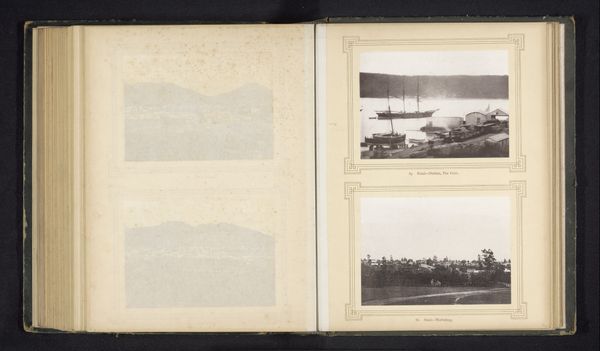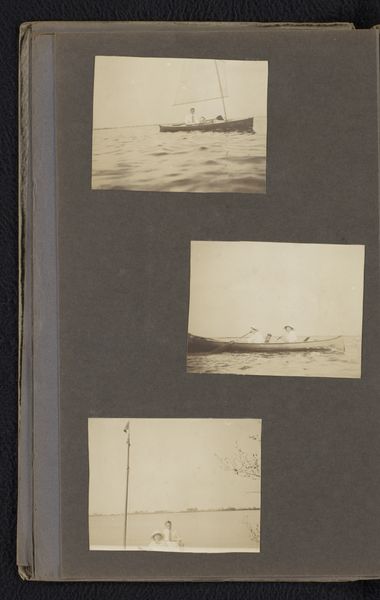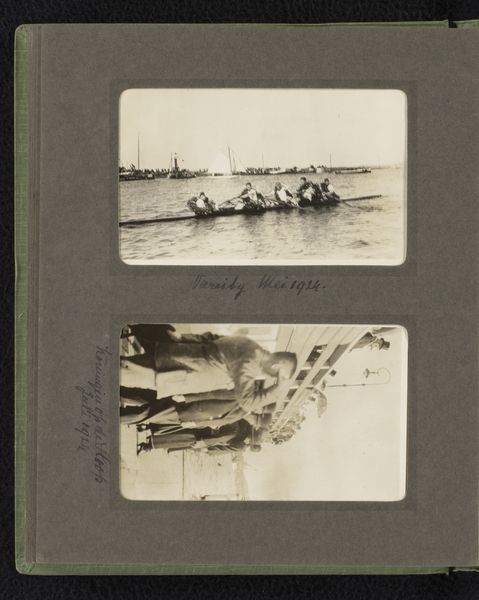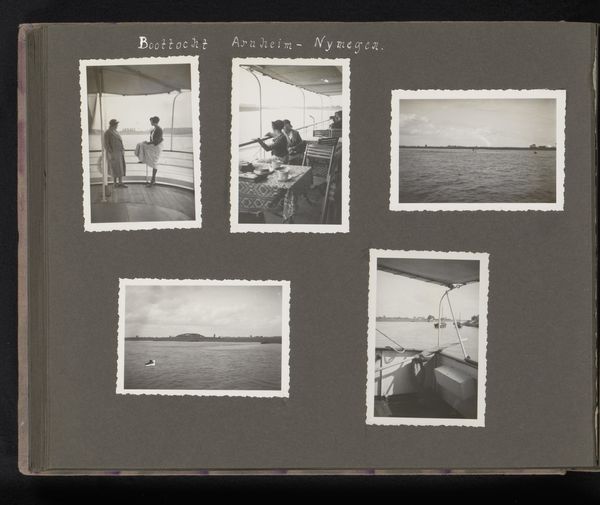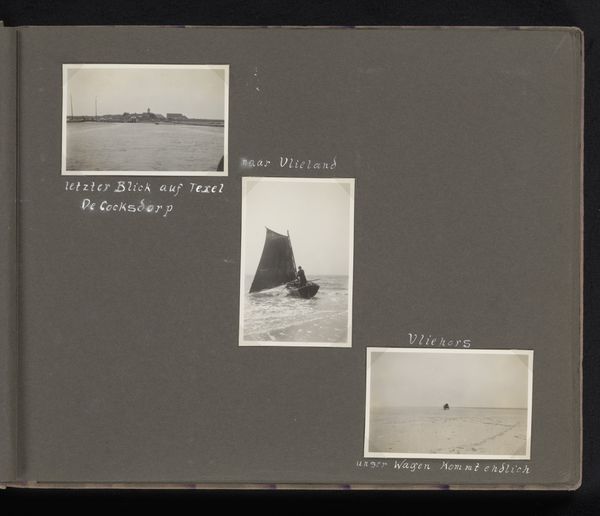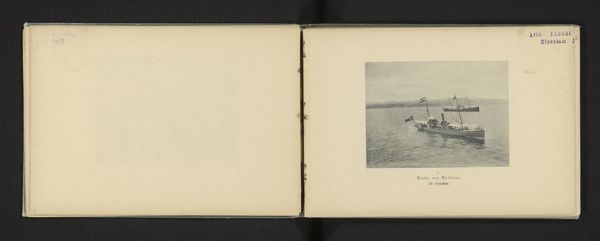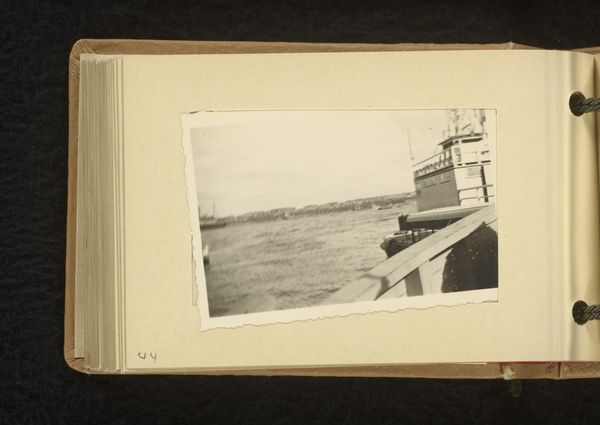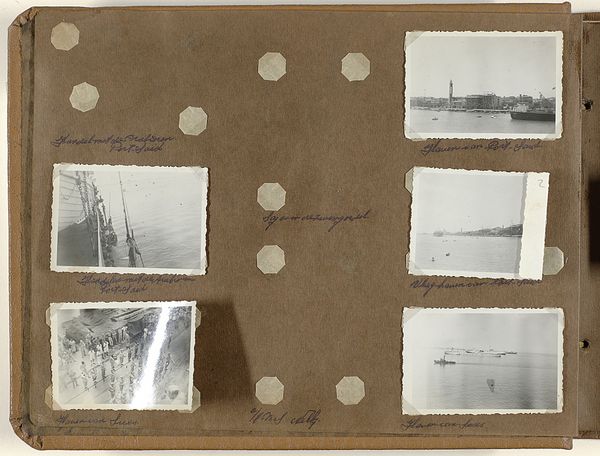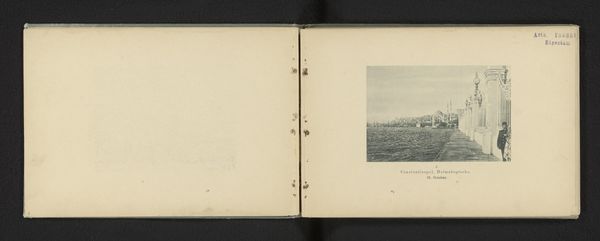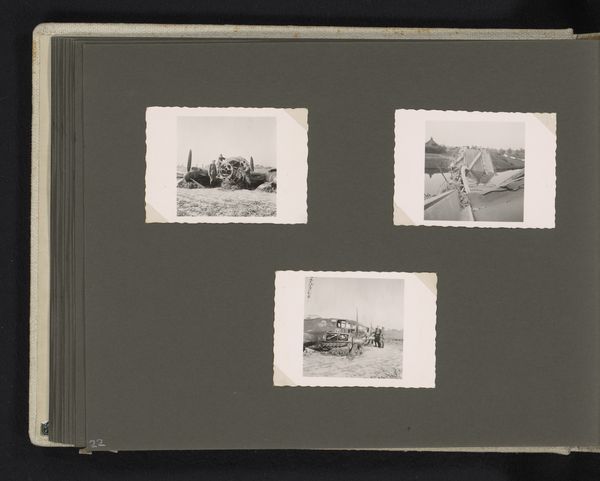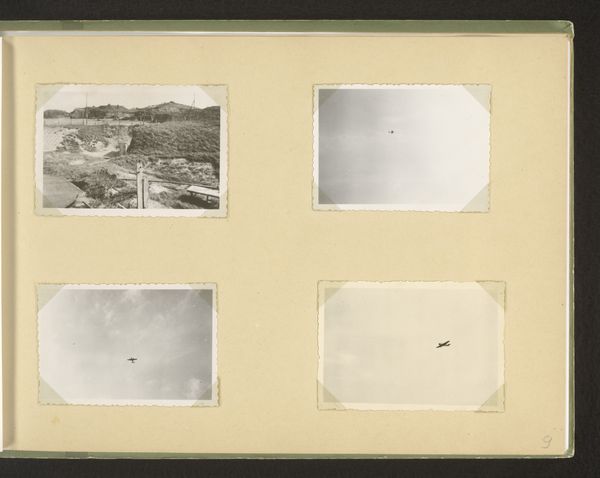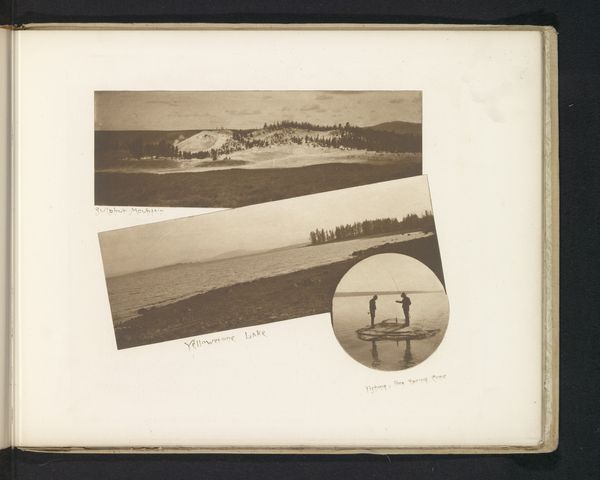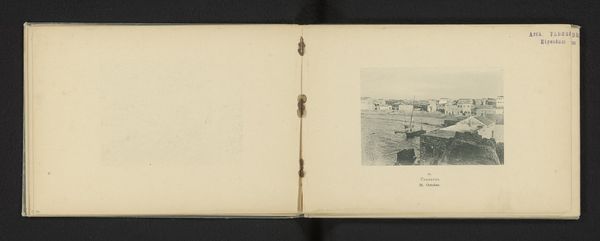
photography, gelatin-silver-print
#
landscape
#
photography
#
gelatin-silver-print
#
modernism
#
realism
Dimensions: height 60 mm, width 90 mm, height 195 mm, width 292 mm
Copyright: Rijks Museum: Open Domain
Editor: This is "Schepen op zee," or "Ships at Sea," a gelatin-silver print made sometime between 1940 and 1944. It's giving me a melancholy, wartime feeling – very somber and a bit lonely. How do you interpret this work, especially considering its historical context? Curator: Well, given the timeframe, those ships almost certainly represent naval vessels involved in the Second World War, so your instinct is spot on. What's particularly interesting to me is thinking about this piece in terms of the role of photography during wartime. It served both propaganda needs and a way to record events. Do you see anything in these images that suggests which purpose it served? Editor: That's a great point. The last image with the uniformed figure could easily be propaganda to show that their naval forces were on guard. Curator: Exactly! But beyond that specific image, consider who might have commissioned or taken these photos and where they might have been displayed. Knowing that this is now in the Rijksmuseum makes one wonder about its journey from a potentially functional wartime image to a piece of art viewed in a national museum. The gelatin-silver print process itself, popularized in the late 19th century, democratized photography, but did it democratize access to these images? Or control? Editor: So it is the act of memorializing in this kind of setting, a national museum, that ultimately makes it an important and somewhat public artwork today. Thinking about control, I guess now it also makes you wonder who gets to shape the story being told through these photos. Curator: Precisely! These aren't just pretty pictures of ships. They are embedded in social and political power dynamics. Even their current presentation frames how we're meant to perceive them and a painful time in the past. Editor: Wow, that definitely makes me see more depth in what at first glance looks like just a simple photograph of some ships. Thanks for illuminating the historical context! Curator: My pleasure! History breathes into art and vice versa; examining art from both sides always shows you a bigger story.
Comments
No comments
Be the first to comment and join the conversation on the ultimate creative platform.
